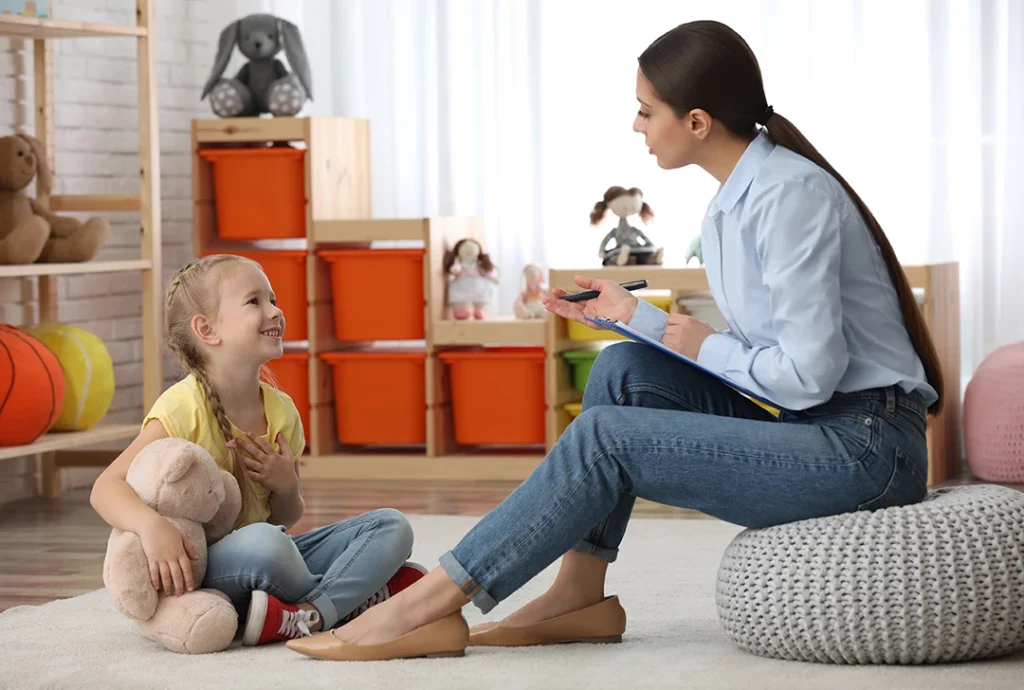Is the ADHD 30% Rule Real?
By Elite Psychiatry | September 18, 2025
Understanding ADHD and Its Impact
ADHD, or Attention-Deficit/Hyperactivity Disorder, is more than a buzzword—it’s one of the most commonly diagnosed neurodevelopmental conditions in children, teens, and adults. While most people think of ADHD as being “distracted” or “hyper,” it’s far more complex than that. It impacts how the brain processes information, controls impulses, and organizes tasks.
ADHD shows up in different ways: some people struggle primarily with attention (inattentive type), others with restlessness and impulsivity (hyperactive-impulsive type), and many with a combination of both.
For a child in Seventh Street, this might mean losing focus in class or blurting out answers without raising their hand. For an adult, it might look like missing deadlines at work or struggling to manage bills.
How ADHD Affects Daily Life
Living with ADHD is like trying to watch five TV channels at once—your brain can’t decide which one to focus on, and before long, everything feels overwhelming. Kids may forget homework, teens may have trouble keeping friends, and adults may feel like they’re always “behind” no matter how hard they try.
The emotional toll can be heavy too. Repeated failures or misunderstandings often lead to low self-esteem and frustration. That’s why understanding ADHD in practical terms—like the 30% rule—can help families reframe challenges as developmental delays rather than personal shortcomings.
The Origins of the ADHD 30% Rule
Where Did the 30% Concept Come From?
The so-called ADHD 30% rule comes largely from the research and clinical work of psychologist Dr. Russell Barkley, who observed that children with ADHD often display a developmental lag in executive functioning skills. His work suggested that, on average, people with ADHD function at about 70% of the maturity level expected for their age group.
For example, if a 12-year-old has ADHD, their ability to manage time, control impulses, or regulate emotions may resemble that of an 8- or 9-year-old. This doesn’t mean they’re less intelligent—it simply reflects a difference in how their brain develops and manages executive functions.
How Experts Interpret This Rule
Professionals don’t see the 30% rule as a hard-and-fast number. Instead, it’s a rule of thumb—a way to help parents, teachers, and even employers understand why certain behaviors might appear “younger” than expected. It encourages empathy and realistic expectations rather than judgment.
Breaking Down the 30% Rule in Real Life
ADHD and Executive Function
Executive functions are the brain’s “CEO skills”—things like time management, planning, emotional control, and self-regulation. People with ADHD often struggle with these skills, which makes daily life harder.
Delayed Emotional Development
Think about a 14-year-old who bursts into tears or has a meltdown when frustrated. While most of their peers are learning to self-soothe and manage stress, ADHD may delay that process. This doesn’t mean they won’t get there; it just means they need more time and guidance.
Academic and Social Struggles
School can feel like a battlefield. Forgetting assignments, missing instructions, or blurting out in class creates academic and social tension. Friendships can suffer because peers may see them as immature or unpredictable. Here in Seventh Street, many parents report noticing this “gap” most clearly in school settings.

Does Science Support the ADHD 30% Rule?
Research Evidence
Brain imaging studies show that certain brain regions linked to attention, impulse control, and planning mature more slowly in people with ADHD. This lends weight to the idea of a developmental delay. Research also highlights differences in dopamine regulation, which impacts motivation and reward systems.
What Researchers Disagree On
Not all scientists agree that the gap is precisely 30%. Some argue that using a fixed percentage oversimplifies ADHD. After all, ADHD symptoms exist on a spectrum—two children the same age may display very different levels of maturity and self-regulation. Still, even skeptics acknowledge that developmental delays are real; they just hesitate to put a strict number on them.
Why the 30% Rule Matters to Families
Understanding Your Child’s Struggles
For many parents, learning about the 30% rule feels like a lightbulb moment. Instead of blaming themselves or their child, they begin to see ADHD behaviors as part of brain development, not willful disobedience. Suddenly, meltdowns, forgetfulness, or impulsivity make sense in a new light.
The Parent’s Perspective
Families in Seventh Street often describe a sense of relief when they understand this perspective. It allows them to reset expectations, celebrate small victories, and provide extra patience. Recognizing the developmental gap also helps parents advocate for support at school, where children may need accommodations to succeed.
ADHD in Teenagers and Young Adults
Social Development Gaps
Teenagers with ADHD may crave independence but struggle to manage it. While peers are learning to drive, balance social lives, and think about careers, teens with ADHD may feel left behind. They might misread social cues, act impulsively in relationships, or struggle to maintain friendships.
Career and Responsibility Challenges
As they transition into adulthood, the stakes get higher. Applying for college, managing jobs, or handling responsibilities like paying rent can feel overwhelming. Many young adults with ADHD find themselves missing deadlines, overspending, or bouncing between jobs—not because they’re incapable, but because executive function challenges make the leap to adulthood harder.
Adults Living with ADHD
Emotional Maturity and Workplace Struggles
The 30% lag often continues into adulthood, especially when it comes to managing emotions. Adults with ADHD may overreact to stress, struggle with criticism, or find workplace organization nearly impossible. In meetings, they may zone out or interrupt unintentionally.
Coping Mechanisms That Work
Fortunately, adults can build coping strategies. Many rely on apps, planners, or alarms to keep track of deadlines. Therapy, medication, and lifestyle changes—like exercise and mindfulness—also help.
At Elite Psychiatry Center – Psychiatrist Adult, Child & Adolescent, adults in Seventh Street receive tailored plans that combine professional care with real-life strategies.
How Elite Psychiatry Center Helps Families in Seventh Street
Professional ADHD Evaluations
Getting a clear diagnosis is the first step. At Elite Psychiatry Center, evaluations go deeper than quick checklists. Psychiatrists assess medical history, behavioral patterns, and family input to ensure an accurate diagnosis.
Support for Children, Teens, and Adults
Care doesn’t end at diagnosis. Elite Psychiatry Center offers therapy, medication management, and practical tools for all ages. Children learn how to build routines, teens get guidance on social and academic struggles, and adults receive workplace coping strategies.
Why Families Choose Elite Psychiatry Center
Families in Seventh Street trust Elite Psychiatry Center because it blends expertise with compassion. Instead of treating ADHD as just a set of symptoms, the center sees the whole person—their strengths, struggles, and goals. That holistic approach makes a lasting difference.
Practical Tips for Managing ADHD at Any Age
Building Structure and Routines
Consistency is a lifeline for ADHD. Parents can use visual charts, timers, or scheduled breaks to help kids stay on track. Adults benefit from planners, digital reminders, and chunking tasks into smaller steps.
Tools for Emotional Regulation
Emotional outbursts can derail a day. Techniques like deep breathing, journaling, or even short walks can help calm the nervous system. For kids, creating “cool-down corners” at home gives them a safe space to manage big feelings.
Community and Professional Support
No one should face ADHD alone. Support groups, therapy sessions, and family education programs in Seventh Street provide encouragement and shared strategies. When combined with expert care at Elite Psychiatry Center, families find balance and hope.

Rethinking the ADHD 30% Rule
Why It’s a Guideline, Not a Hard Rule
The ADHD 30% rule is best used as a guideline, not a diagnosis. It helps families set realistic expectations, but it doesn’t predict the future. Many people with ADHD grow into successful, fulfilled adults—sometimes because of, not despite, their unique ways of thinking.
Moving Beyond Numbers to Real-Life Support
Numbers are neat, but life is messy. Instead of obsessing over whether the delay is exactly 30%, families should focus on building support systems—at school, at home, and in the community. That’s where real progress happens.
Elite Psychiatry Center – Psychiatrist Adult, Child & Adolescent Serving the Seventh Street Community and Beyond in Sugar Land
Elite Psychiatry Center – Psychiatrist Adult, Child & Adolescent is dedicated to serving the diverse needs of the local community of Sugar Land, including individuals residing in neighborhoods like Seventh Street. With its convenient location near landmarks such as the City Park and major intersections like 7th St. and Wood St. (coordinates: 29.623091329142436, -95.62667319410875), we offer same-day adhd testing Sugar Land services.
Get Same-day Adhd Testing At Seventh Street Now
Navigate from Seventh Street to Elite Psychiatry Center – Psychiatrist Adult, Child & Adolescent Now
Conclusion
Is the ADHD 30% rule real? In a way—yes, it reflects the developmental delays many people with ADHD experience. But it’s not a one-size-fits-all law. It’s a tool for understanding, not a label that limits potential.
At Elite Psychiatry Center – Psychiatrist Adult, Child & Adolescent in Seventh Street, families discover that with the right guidance, children, teens, and adults with ADHD don’t just “catch up”—they thrive. With compassion, structure, and professional care, the gap becomes a bridge to growth and success.
FAQs
1. Is the ADHD 30% rule backed by science?
Yes, it’s supported by research on brain development, but it’s more of a guideline than a strict scientific law.
2. Does the 30% rule apply to adults with ADHD?
It can. Many adults still experience emotional and executive functioning delays compared to peers.
3. Can therapy help with ADHD executive function delays?
Absolutely. Therapy builds coping strategies, while medication and routines help strengthen executive skills.
4. How do I know if my child has ADHD?
A professional evaluation at a trusted center like Elite Psychiatry Center provides the most accurate answers.
5. Does ADHD go away with age?
Not exactly. Symptoms often shift, but with treatment and coping skills, many people learn to manage ADHD effectively.
“From mental health heredity to fostering understanding and support, our guidance spans generations. We’re here to assist with every aspect of mental health.”
Or Call Us Now!






